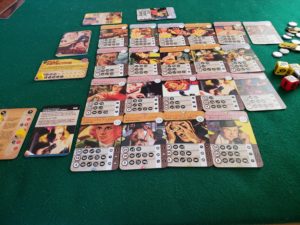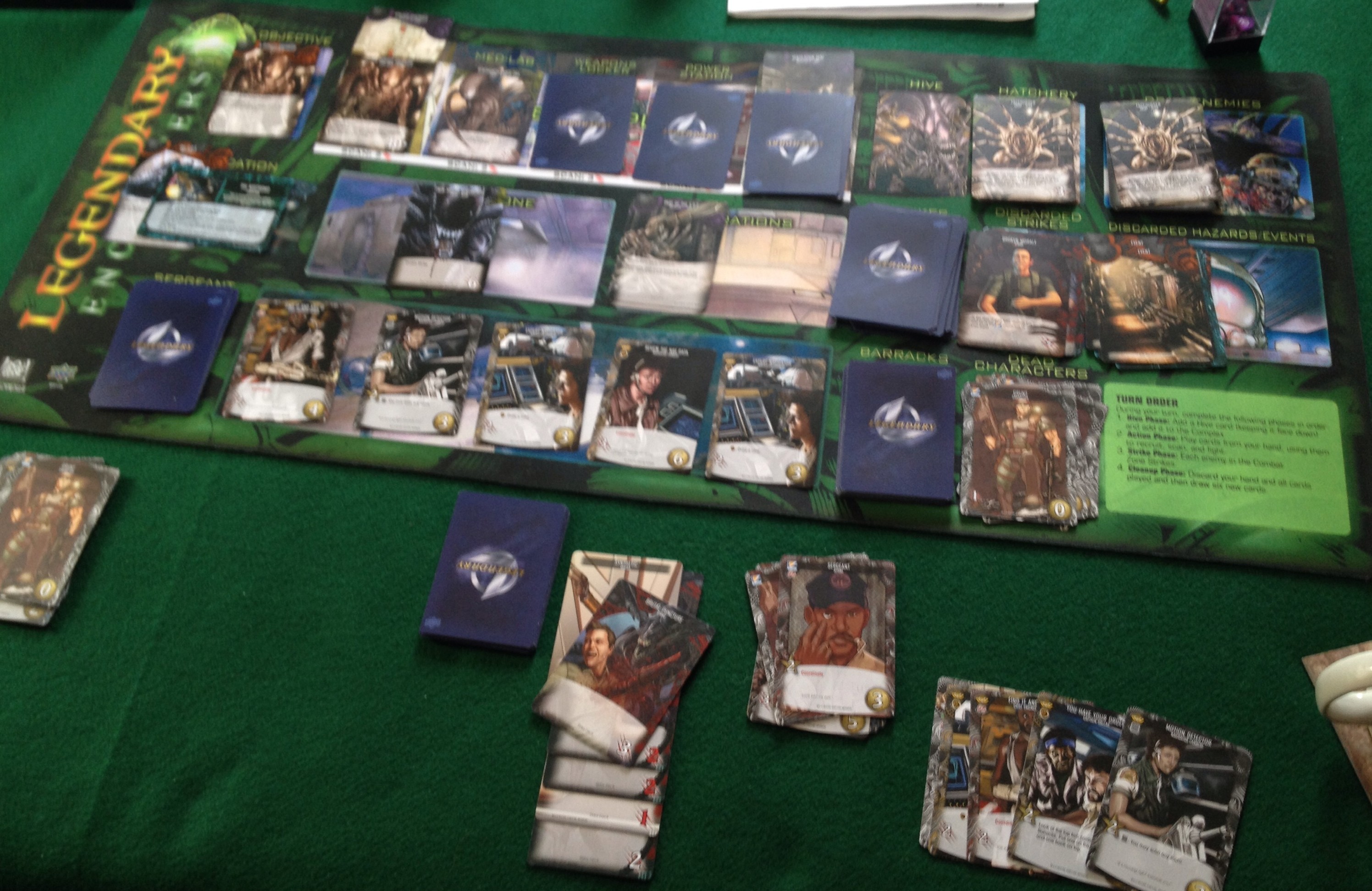Posts Tagged: game review
Traveller T5 first impressions

The PDF files for the recently concluded Traveller T5 3 big black books have been released to backers via drivethrurpg. I’ve read through Book 1 and here are my initial impressions:
Wow. It feels like the little black book. These PDFs are visually similar with a simple black and white presentation and a writing style that is concise and focused. For modern RPG people this will be a very different experience from the glossy full color pages with rules explained in great detail in multiple sections. I have started on Book 2 and the same feel and style are consistent.
One of the reasons I’m a fan of Traveller is that the game is imbued with science. The science fiction theme is an obvious reason, but the game system uses a base 33 numbering system (Original aka Classic Traveller uses hexidecimal) to represent stats for players, monsters, planets, and vehicles. The rules include mechanics for things like item quality and durability. Something lacking in most other RPGs. I’m D&D I can just wander around stabbing and slashing with my short sword adventure after adventure and never wonder about it breaking or needing to be sharpened. If I wander into a town and the blacksmith is making swords there’s no reason to upgrade from what I have because a short sword is a short sword is a short sword in D&D.
In Traveller that’s not the case. I have a cutlass that I’m using in an adventure and I stop in at a space port with a higher tech level than the planet where I bought my cutlass I can compare QREBS scores and see that the new carbon fiber aluminium cutlass is lighter and more reliable that my old steel one. QREBS includes quality, reliability, ease of use, bulk, and safety. Objects get a score and the referee and players can use this value to determine what equipment is good and if you have to use that chainsaw with the low QREBS score what may happen to you…
Having metrics and mechanics for things like planetary composition, item quality, and space travel that are based on physics and realism creates the impression of a science based game for me. I’m sure others may find the system overly nit-picky.
Book 1 does not have a lot of fluff and feels like a series of tables connected together with prose and examples in key places, but in general the book does not do a good job of explaining some basic rules clearly. I could not find character death rules in the book. In the combat chapter somewhere near the assigning damage rules you would expect to find a sentence or two about how to handle character death. There isn’t one. There is a rule for assigning damage and then a rule for assigning massive damage (nuclear explosion, decompression, vehicle impacts) and then a mention that if all stats are reduced to zero you die. I felt like that should have had its own paragraph.
As I continue working through the PDFs I find myself thinking about writing software to implement some of the tables and help with the game mechanics. I find this very thematic and yet another reason while Traveller is my favorite Sci-Fi game. I can see how that sort of mathy experience could be off putting to people used to some of the more modern RPGs.


Pulp Detective — a review

Pulp Detective is a solo card and dice game set in the mystery/detective genre of the 1930-40s The art work is very thematic and reminds me of comics like The Shadow.
The setup is easy. You pick a detective from a list of characters. Each detective has a unique special power that you can use during play. You have two other cards: one tracks which item is in your inventory and the other tracks stamina (aka health) and how many clues you have found.
You have a set number of hours to collect enough clues to confront the villain and solve the crime. At the start of the round you select three cards from the investigation deck face down and pick one to play, one to discard, and one to put back into the deck. There are three types of investigation cards and each type has a probability to grant specific rewards if you succeed.
The card you play has a task (much like Elder Sign or Five Year Mission) that you use the dice to roll the correct symbols. Here’s one of the tricks of this game: the dice have non-standard faces. Each die has a multiples of the same symbol (e.g. the two eyes and two newspaper die) but each die is unique so pick which die to roll carefully.
Impressions and game play thoughts
This game is super difficult. There is a lot of randomness in how the cards come out of the deck and what symbols turn up when you roll. There’s a merciful mechanic where if you fail a card task you can take a token that counts for one of the dice faces you did roll during the attempt. If you are successful and don’t need to roll all your dice on a card you can peek at the three cards that come at the start of the next round. You need to pay close attention to the time tracker and take care picking what type of card to put into play each turn. My first game I just grabbed whatever looked good and lost very quickly.
The game is thematic and feels like an old Humphrey Bogart movie as you rough up an informant, then have a shoot out, then find a tied up dame who has a clue for you. It’s just I had a terrible run of luck with the dice and could not get enough clues to find the bad guy for the final conflict. I do look forward to trying until I solve the case. The core game has three cases in the box.


Legendary Encounters review

Legendary Encounters is a deck building game based on the four Alien movies that use
the Upper Deck Marvel Legendary card game mechanics. The players pick an avatar out of a list of Alien movies archetypes (scientists, gunner, synthetic, corporate executive, scout, priest, mercenary, etc.) and use recruit points to gain new cards and strike points to defeat xenomorphs. It can support solo play and is tense at time and exciting.